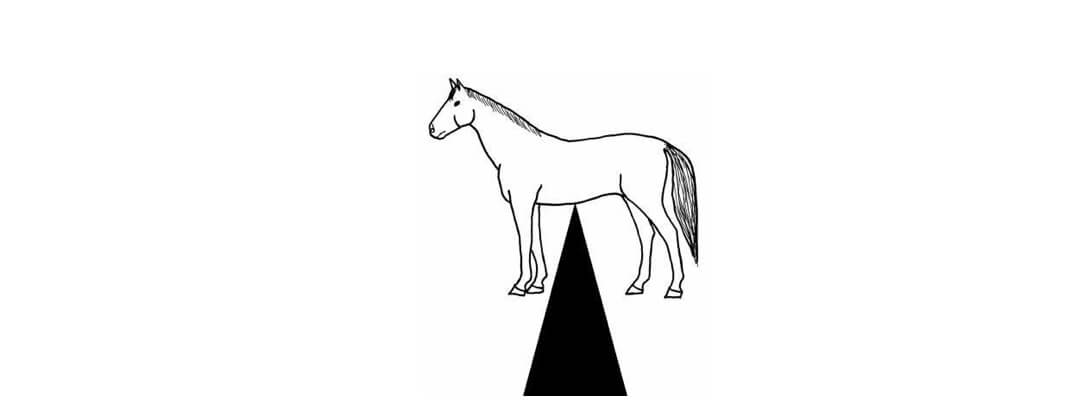The Physical and Mental Components of a Well Balanced Horse
by Eleanor Blazer
Balance: we all strive for it. It’s a word used frequently by horse owners, trainers, farriers, veterinarians, nutritionists and holistic practitioners. There are several definitions for balance: equal distribution of weight, mental/emotional stability, the ability to maintain equilibrium (not fall over) and to equalize (as in credits and debits). A closer look shows how important balance is to the horse.

When you think about balance and the horse, the first thing that comes to mind is probably related to conformation. A well-balanced horse should not appear heavier in the forehand than in the hindquarters (or vice versa). He should also have a similar distance in the girth as from the underline to the ground. In the online course, “Conformation and Selection for Performance” (www.horsecoursesonline.com), instructor Don Blazer explains a balanced horse is not only pleasing to the eye, but also can perform efficiently, decreasing the chances of injury.

We’ve all heard the old adage “no foot, no horse.” Balance is also important in the hoof, both in the shape and in its strength to support the horse while providing the basis for optimum (efficiency of) movement. Faulty foot balance precludes optimum movement and directly contributes to bone-chip fractures, a navicular condition, shortened strides, bad backs and sore muscles (taken from the online course “Bits, Saddle Fitting and Hoof Balance”). A balanced horse standing on balanced hooves is a beautiful picture.
Now that we have our balanced horse, we’re going to put weight on his back and throw the whole thing off.
I weigh 105 pounds on a good day; my saddle weighs 35 pounds every day.  So that’s 140 pounds sitting on the back of a moving and very reactive creature. If my saddle is not well made (balanced) it could create a sore back. A proper fitting saddle is a must. Don’t try to fix it by buying expensive pads; get a saddle that fits the horse.
So that’s 140 pounds sitting on the back of a moving and very reactive creature. If my saddle is not well made (balanced) it could create a sore back. A proper fitting saddle is a must. Don’t try to fix it by buying expensive pads; get a saddle that fits the horse.
In the online course “Equine Massage,” instructor Betty Lindquist explains the difference between static balance and dynamic balance. Static is when the horse is standing still and dynamic is when he is moving. The center of balance changes depending on gait (movement) and collection. Collection is when the horse frames himself to balance the weight he is carrying—a race horse is collected with the jockey forward, while a cutting horse is collected with the rider back.
A rider who has difficulty with her own balance makes it very difficult for the horse to maintain balance. Many horses are blamed for poor movement or an inability to perform correctly when it is actually the unbalanced rider sending conflicting cues through improper body position that is the problem. The horse doesn’t stand a chance.
Published January 2014 Issue

Eleanor Blazer was raised training and caring for horses. She learned to ride and care for the horses her family bought and sold. Many of these horses required improved nutrition when they arrived for training. Eleanor’s experience and research has benefited both horses and horse lovers in the field of equine nutrition. An equine nutrition consultant, based in Bulverde, Texas, she keeps busy doing equine nutrition consultations, conducting seminars, and speaking to youth groups about horse care and nutrition. Eleanor is the author of the syndicated column The Way of Horses. She has more than 20 years experience helping and being a mentor to those wanting to know how to provide the very best care and nutrition for our special friend – the horse.

